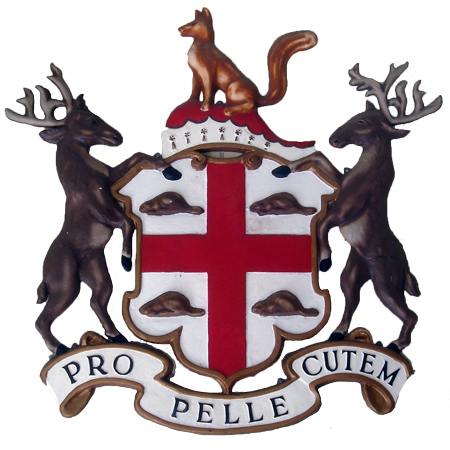Trader George Henderson of the Hudson’s Bay Company visits Fort Mandan, and Sgt. Ordway describes their business at the Knife River Villages. A delegation of Cheyennes and Arikaras arouse Mandan suspicion.
More Trouble Brewing
by Yellowstone Public Radio[1]Originally aired weekdays by Yellowstone Public Radio during the Bicentennial observance of 2003-2006. Narrated by Hal Hansen. Scripts by Whit Hansen and Ed Jacobson. Produced by Leni Holliman. © … Continue reading
Picketing the Fort
This day, all our Men, were employ’d in procuring pickets, and picketting in our Fort which the Officers were determined to have made Strong.
—Joseph Whitehouse
Cheyennes and Arikaras
Six Chiens [Cheyennes] So Called by the french Shar ha Indians had arrived with a pipe and Said that the mandans apprehended danger from the Shar has as they were at peace with the Seaux [Sioux]; and wished to Kill them and the Ricarees (or Panies) [Arikaras] but the Cheifs informed the nation [“]it was our wish that they Should not be hurt, and forbid being Killed &c.”
—William Clark
Hudson’s Bay Visitor
a Scotsman who is tradeing at the Mandens came to visit us. he belonged to the hudson bay company [page torn, some words illegible] he brought over Tobacco Beeds & other kinds of Goods & traded with the Mandens for their furs & buffalow Robes. they bring Some Guns to trade for horses &.C. this hudsons bay compy. lay Garrisoned near the N. W. Compy. on River [blank] Eight or 10 days travel by land a North course from this.
—John Ordway
Weather Diary
Ther. at rise
Weather Wind at rise
Thert. at 4 P.M. Weather Wind at 4 P.M. River 1 below 0 fair E. 6 S E r rise 1 ft. Ice thick. wind hard
—Meriwether Lewis[3]To assist the reader, the editor of this web page has omitted the date column, merged the “River” columns, and spelled out some abbreviations.
Fort Mandan is a High Potential Historic Site along the Lewis and Clark National Historic Trail managed by the U.S. National Park Service. The North Dakota Department of Parks and Recreation manages a modern reconstruction and the Lewis and Clark Interpretive Center located at US Hwy 83 and ND Hwy 200A.
Knife River Indian Villages National Historic Site is a High Potential Historic Site along the Lewis and Clark National Historic Trail managed by the U.S. National Park Service. A unit of the National Park System, the site is located at 564 County Road 37, one-half mile north of Stanton, North Dakota. It has exhibits, trails, and a visitor center.
Notes
| ↑1 | Originally aired weekdays by Yellowstone Public Radio during the Bicentennial observance of 2003-2006. Narrated by Hal Hansen. Scripts by Whit Hansen and Ed Jacobson. Produced by Leni Holliman. © 2003 by Yellowstone Public Radio. |
|---|---|
| ↑2 | W. Raymond Wood and Thomas D. Thiessen, Early Fur Trade on the Northern Plains: Canadian Traders among the Mandan and Hidatsa Indians, 1738–1818 (Norman: University of Oklahoma Press, 1985), Appendix:Table 1. |
| ↑3 | To assist the reader, the editor of this web page has omitted the date column, merged the “River” columns, and spelled out some abbreviations. |
Experience the Lewis and Clark Trail
The Lewis and Clark Trail Experience—our sister site at lewisandclark.travel—connects the world to people and places on the Lewis and Clark Trail.
Discover More
- The Lewis and Clark Expedition: Day by Day by Gary E. Moulton (University of Nebraska Press, 2018). The story in prose, 14 May 1804–23 September 1806.
- The Lewis and Clark Journals: An American Epic of Discovery (abridged) by Gary E. Moulton (University of Nebraska Press, 2003). Selected journal excerpts, 14 May 1804–23 September 1806.
- The Lewis and Clark Journals. by Gary E. Moulton (University of Nebraska Press, 1983–2001). The complete story in 13 volumes.




